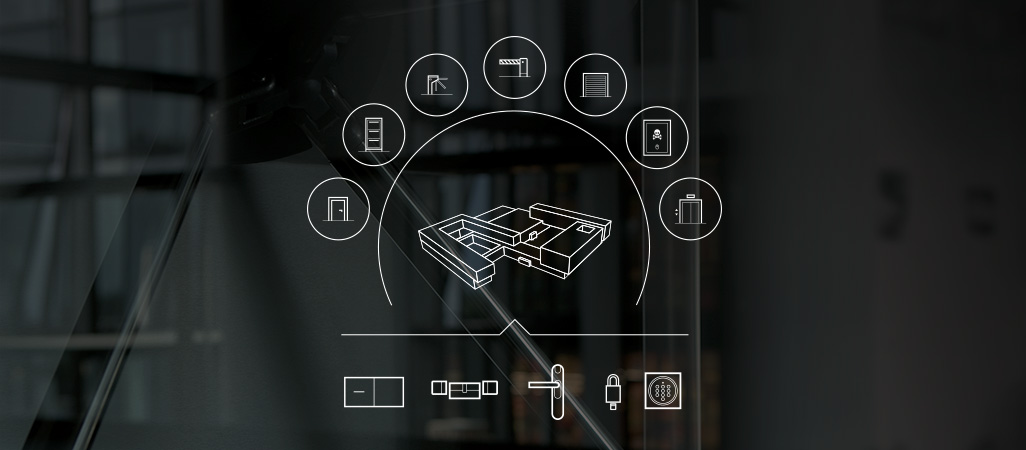smart intego
Your perfect solution for integrated access control.
SmartIntego Locking Cylinder, SmartHandle, PIN code Terminal, Padlock and GatewayNode – SmartIntego components can be easily integrated into complex security systems.
With its high-performance communications protocols, SmartIntego can be seamlessly incorporated into existing control systems for building security technology. System component auto-configuration in SmartIntego Manager ensures that there is far less work involved in component integration compared to other systems.
The scope of services and features match high expectations which building operators have of innovation leaders for digital locking and access control systems. One advantage of the system is its 868-MHz technology, which ensures wide, interference-free ranges in the radio network.
The SmartIntego product line consisting of locking cylinders, SmartHandles, PIN codes and padlocks can handle the transmission standards in all established card formats such as MIFARE® Classic, MIFARE® DESFire® / EV1 / EV2, UID (card serial number) as per ISO 14443 (e.g. MIFARE®, Legic® Advant, HID® SEOS) as well as Calypso Serial Number and ISO 7816-4 elementary file.
In SmartIntego, SimonsVoss offers a solution with components which have proven their worth a thousand times over in practical use. These components excel thanks to their German-made quality and excellent design. Unique functions also ensure optimum security – for people, for investment and for the future.
Alternatively networked with offline too
The SmartHandle, cylinder and padlock are also able to communicate with the access control system in offline mode via what is known as a 'virtual network' using a SmartCard as an identification medium. Not only can cards be read, but they canalso be written on. This allows data transfer between the access control system and SmartIntego locking media to forward key security-relevant information such as access rights, blacklists, battery status and physical access lists for each locking operation. This provides mixed functionality between wireless online and Virtual CardNetwork within the overall system.
Exceptional!
- Remote release: individual locking devices can be activated centrally without a SmartCard.
- Permanent release: doors or groups of doors can be switched to 'open' or 'closed' without a SmartCard for specific time frames.
- Multi-reader: locking devices can read different card formats.
- Office mode: users can use their cards to activate doors in office mode.
For instance; a lock can be permanently activated by pre-defined users during working hours. - Wireless online mode: doors are linked to the central computer. Wireless online mode mode allows firmware to be updated in a wireless link via GatewayNodes.
- Battery and signal strength: battery status and signal strength are displayed on all software platforms. If the signal strength between a locking device and GatewayNode reduces due to building alterations, then the locking device can be re-assigned to an alternative GatewayNode with higher signal strength.
